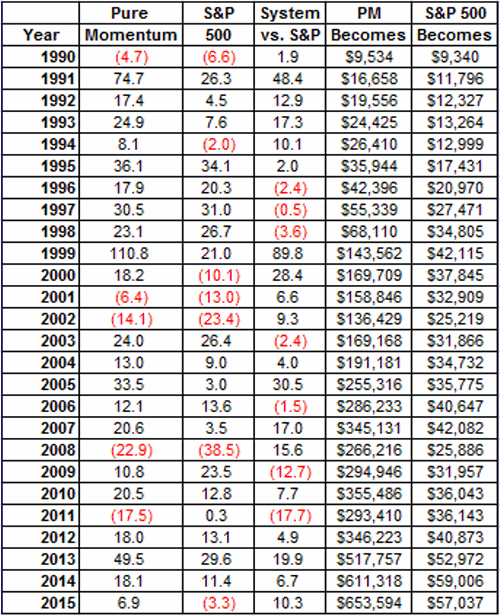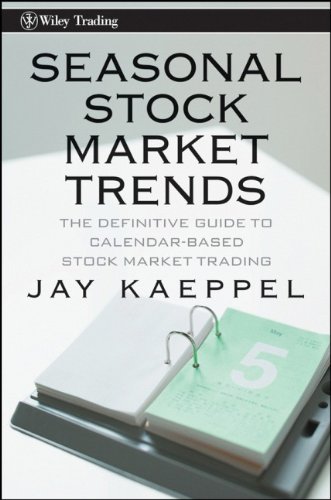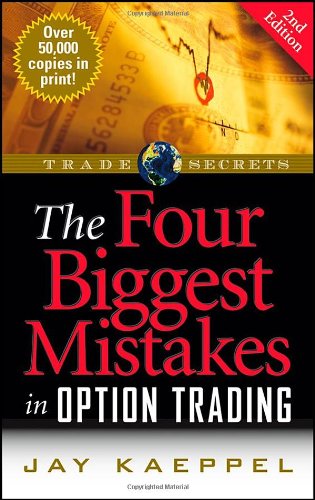Today’s article is an update on this oldie but goodie.
When people ask me if momentum investing “works”, at this point – because I am older and (even) crankier than I used to be – I typically refer them to the linked article above and grunt “decide for yourself.” Sorry, it’s just my nature.
(See also: The Signpost Up Ahead: The September Danger Zone)
So today is an update picking up from the end of 2013. Repeating from the original article:
In 2001, I published an article in “Technical Analysis of Stocks and Commodities” magazine titled “Trade Sector Funds with Pure Momentum”, which detailed one specific and simple trading method. While in fact this is only one of many sector trading systems that I have developed over the years – and not necessarily the best one – it remains one of my favorites. Probably because it is just so gosh darn simple. When I was young my Momma told me to be a simple kind of man. Or was it a Freebird she told me to be? Well, in any event, here are the “simple kind of rules” using Fidelity Select Sector funds:
-After the close of the last trading day of the month identify the five Fidelity Select Sector funds that have the largest gain over the previous 240 trading days.
-For this system, ignore Select Gold (ticker FSAGX). If FSAGX appears in the top 5 funds then skip it and include the 6th highest rated funds.
-If fewer than five funds showed a gain over the previous 240 trading days, then hold cash in that portion of the portfolio (i.e., if only 3 funds showed a gain, then 60% of the portfolio would be in those funds and 40% of the portfolio would be in cash).
UPDATE FROM ORIGINAL ARTICLE: I have heard from many individuals who cannot easily get access the 240-day change in price action but can easily get access to a simple 12-month change in price action. It is perfectly acceptable to use 12-month instead of 240-trading days. There will inevitably be some differences but it should not have a meaningful impact on long-term results. So take your pick.
-If you sell more than one fund at the end of a month, then rebalance the proceeds in the new funds being purchased (example, you are selling Funds A and B and buying Funds C and D. You have $12,000 in Fund A and $10,000 in Fund B. Split the difference and put $11,000 each into funds C and D).
UPDATE FROM ORIGINAL ARTICLE: I had one individual claim that rebalancing the portfolio every month generated superior results. This may be true, however, I was unable to replicate the numbers he sent me so under the category of “old dog, new tricks” I have simply stuck the original rebalancing method just described above. You on the other hand are free to experiment with more frequent portfolio rebalancing.
And that’s all there is to it.
Year 2013
The original article was published on January 6, 2014 and the return for 2013 was reported as +48.0%. After correcting a few mutual fund data points, it turned out that the actual result was +49.5%.
Years 2014 and 2015 to-date
During Calendar Year 2014 the Pure Momentum System gained +18.1%. Through 9/17/15 the Calendar Year return for 2015 is +6.9%. This compares nicely to +11.4% and -3.3% for 2014 and 2015 for the S&P 500 Index.
The Current Portfolio
Figure 1 – the current Pure Momentum Portfolio
The Important Caveats
The outsized gains registered in 2014 and the fact that the system is “Up” in 2015 while the market is “Down” will certainly curry favor in support of this as a viable investment approach. Nevertheless, it is important for me to point out – and for you Dear Reader – to acknowledge the bad that comes with the good.
So note that:
*In 2008 this system suffered a roughly 45% drawdown so it by no means an “all weather” method that can “easily ride out bear markets.”
*In 2011 this system lost a whopping -17.5% while the S&P 500 gained +0.3%. That’s just serious underperformance.
The Overall Picture
Still, if you are able to view and execute this strategy as a long-term approach, since at least 1990 the “good” has overall far outweighed the “bad”. As you can see in Figure 2:
*$10,000 invested in Jay’s Pure Momentum System has grown +6,436%
*$10,000 invested in Jay’s Pure Momentum System has grown +470%
The disparity in long-term returns from this mechanical system versus simple buy-and-hold is what we “quantitative analyst types” refer to as “statistically significant.”
Figure 2 – Year-by-Year “Jay’s Pure Momentum” versus SPX Buy-and-Hold
Disclaimers: Past results in no guarantee future results. All figures presented in this article are generated using data from sources that are assumed to be accurate.
Jay Kaeppel



Jay:
This strategy is based on ranking the funds based on the closing price on the last trading day of the month and then purchasing at the close. Obviously this is impossible to do. One would have to rank the funds based on the close of the second last trading day each month and then trade on the last trading day of the month or rank the funds based on the close of the last trading day of the month and then execute the trades on the first trading day of the following month. Have you determined how much of a difference this makes to the performance of the system?
Have any/many Sector funds closed in the past? I am curious about whether any degree of survivorship bias is at play.
Fred, Thanks for the comments. For the record (and you are right that I did not mention this in the article and should have) ranking are done after the close of the last trading day of the month and trades are executed at the close of the first trading day of the next month. The numbers through 2013 are all calculated that way. I am going to review the 2014 and 2015 numbers that appear in the article for accuracy. All Fidelity Sector funds re included in the list. Only FNINX and FSPFX stopped trading (5/23/12 i the last date of data I have for those). Jay
Since Feb is only 28 days a short term redemption fee could be charged if you bought feb 1 and sold mar 1. would you sell of hold 2 more days?
I do not recall ever having a problem with trading in 28 day February in the past. That being said, this might be a question best asked of a Fidelity Customer service rep. Jay
Thanks Jay for introducing this system. I’ve been trading it for the past 4-5 years with really good results. My numbers are a little less than yours, probably because of various entry/exit dates, but generally about the same. One big difference is I decided to start moving to cash when the 50 DMA drops below the 200 DMA, even though the individual funds may still be showing a gain (extra conservative, I guess). Started with about $250K and now have in the neighborhood of $480K, even after the recent downturn. So if this system isn’t your best, what is? …Keith
Hi Keith. i’m like you and don’t want to go through 40% draw down. one question is do you look at the selected funds (top 5 or whatever appears) and do you exit any day during the month when 50 MA crosses 250 MA or review at the end of the month? the other tweak i have seen others use is if any of the funds are <10mth MA or even S&P is <10Mth MA, then stay in cash or TLT. only thing that i'm paranoid is being in for a month and the portfolio losing 20% or so. Thx for whatever you can provide
Hi Simhan,
I generally use 50/200 DMA as a guide, but this sell off in January came so quickly that had I followed that rule, I would have been out with a big loss. Now that the market has gained back much of that loss, I’m about to yank the Pure Mo funds off. I’ve already pulled off my other accounts today. The 50 DMA is still below the 200 DMA, so to me that is a sign of weakness, not strength, and I’d rather be out with a small loss than in the market only to watch a 10-20% dive.
I did not roll over to new funds at the end of January per the system rules, because I didn’t want to be locked up for 30 days in case of a major drawdown. Normally I would exit during any day of the month if I’m past the 30 day holding period. I just didn’t do it this time, and I’m glad I waited. I’ll get out this week, primarily because I see this as a bear market rally (I may be wrong, who knows), and also because I’ll be travelling to India this Thursday, and away from the internet, and I don’t want to return in mid-March to see my portfolio take a big hit. If I’m wrong and the market takes off, then I can still recover later, and lose out a bit I suppose….. Keith
Simhan, anyone else who is reading this blog….Fidelity numbers are out this morning and only two funds have posted a positive return for the 12 month period. This was similar to 2008 when I first started trading this system, and back then I blindly followed the rules of picking the top five funds, regardless of how well/bad they were performing. Later a fellow trader mentioned to not trade if they had negative returns for the 12 months. I wish I had known that little trick. It would have saved me some large losses. Now you know.
Sorry Jay…..I don’t mean to overrun your blog….Keith
Thanks Keith. my trading personality is like yours. i’m thinking of using this method with 30 week MA as exit per Stan Weinstein stage analysis.
ok if i don’t get 20% return but did not want huge drawdowns.
Thanks for your clarification and have a good trip to India.
Thanks Keith. the one tweak (again overengineering) i’m considering is to stay out if S&P is < 10 or 12 mth MA that way, one might be able to avoid being invested when the overall trend is down as most of these select funds correlate to the market direction and not experience 40% drop. The other thing i'm struggling is whether to meddle with exit rules or not (like yours 50/200MA cross or 100MA cross).
http://seekingalpha.com/instablog/709762-varan/251242-a-low-drawdown-strategy-for-sector-rotation-for-fidelity-select-funds does quite well with the same set of funds.
Jay:
You have an error in the following: *$10,000 invested in Jay’s Pure Momentum System has grown +470%
I believe that a good trading system is one which you will likely stick with through the rough patches and every trading system has those. Personally, I would not stick with a system that had a 45% drawdown and I doubt others would. I am an asset class momentum trader and I applied my techniques to the Fidelity Select Sector funds but so far I have not been able to design a trading system with these funds alone which provides an acceptable return and drawdown.
Investors should never overlook the value of the maximum drawdown in a backtest. Whatever the maximum drawdown was in the backtest, you can bet your last dollar that the maximum drawdown at some point in the future will be even greater.
An.y thoughts on the trades that may occur in March when feb only has 28 days. Would you take a STR fee since its not 30 days if one bought feb 1 and had to sell march1
Hey Jay… Can you give updates on this strategy thru feb 29th?